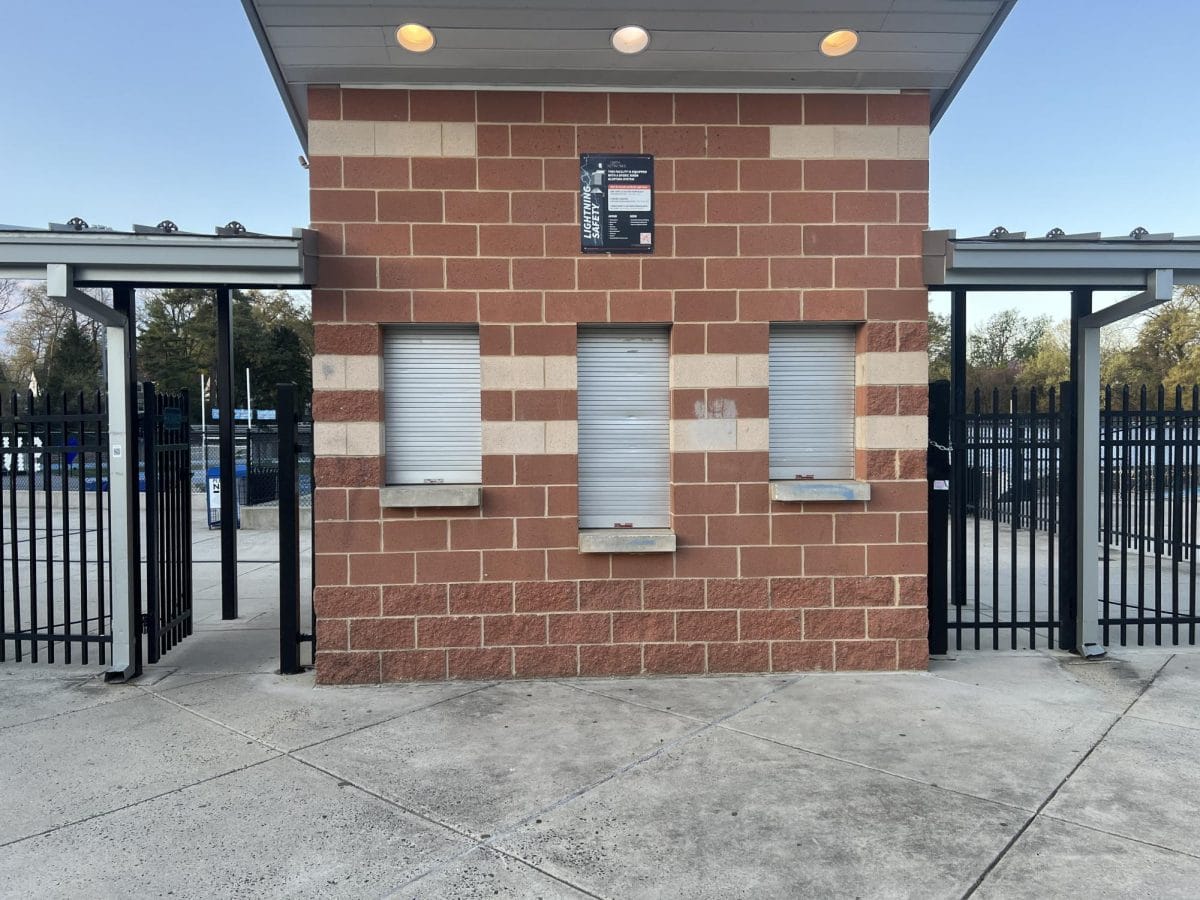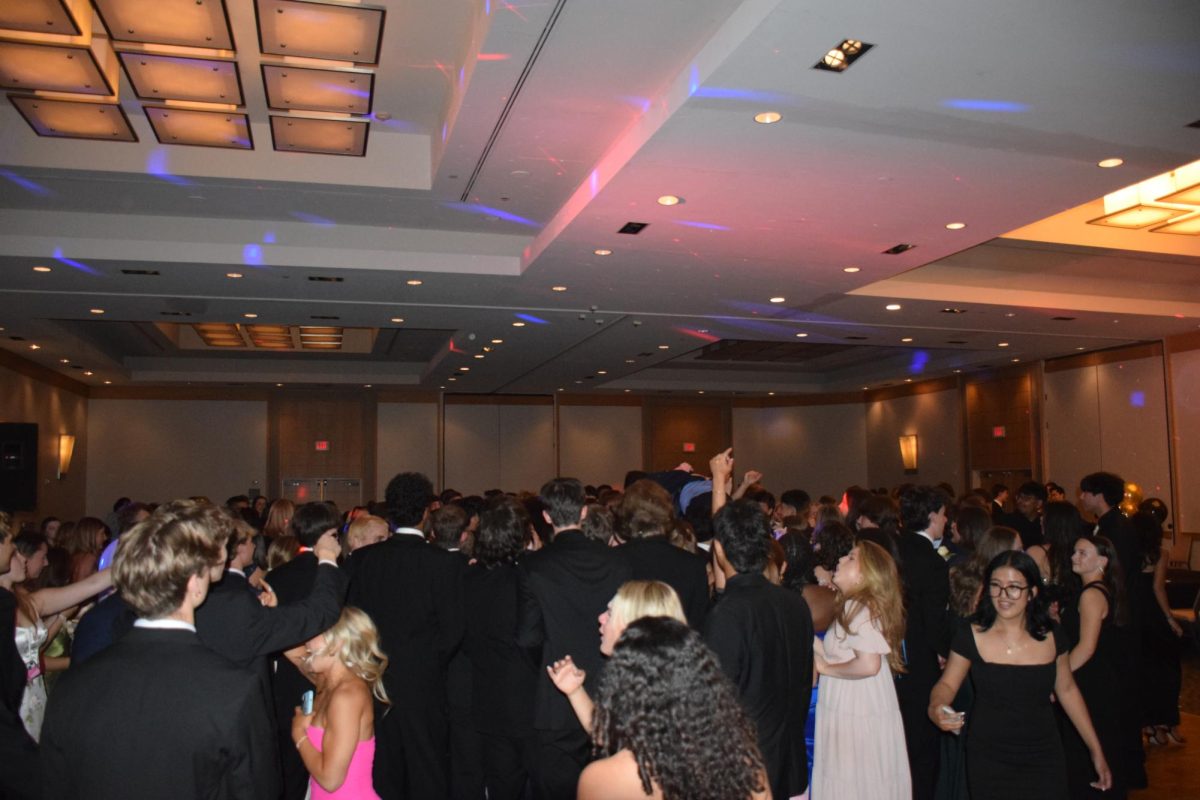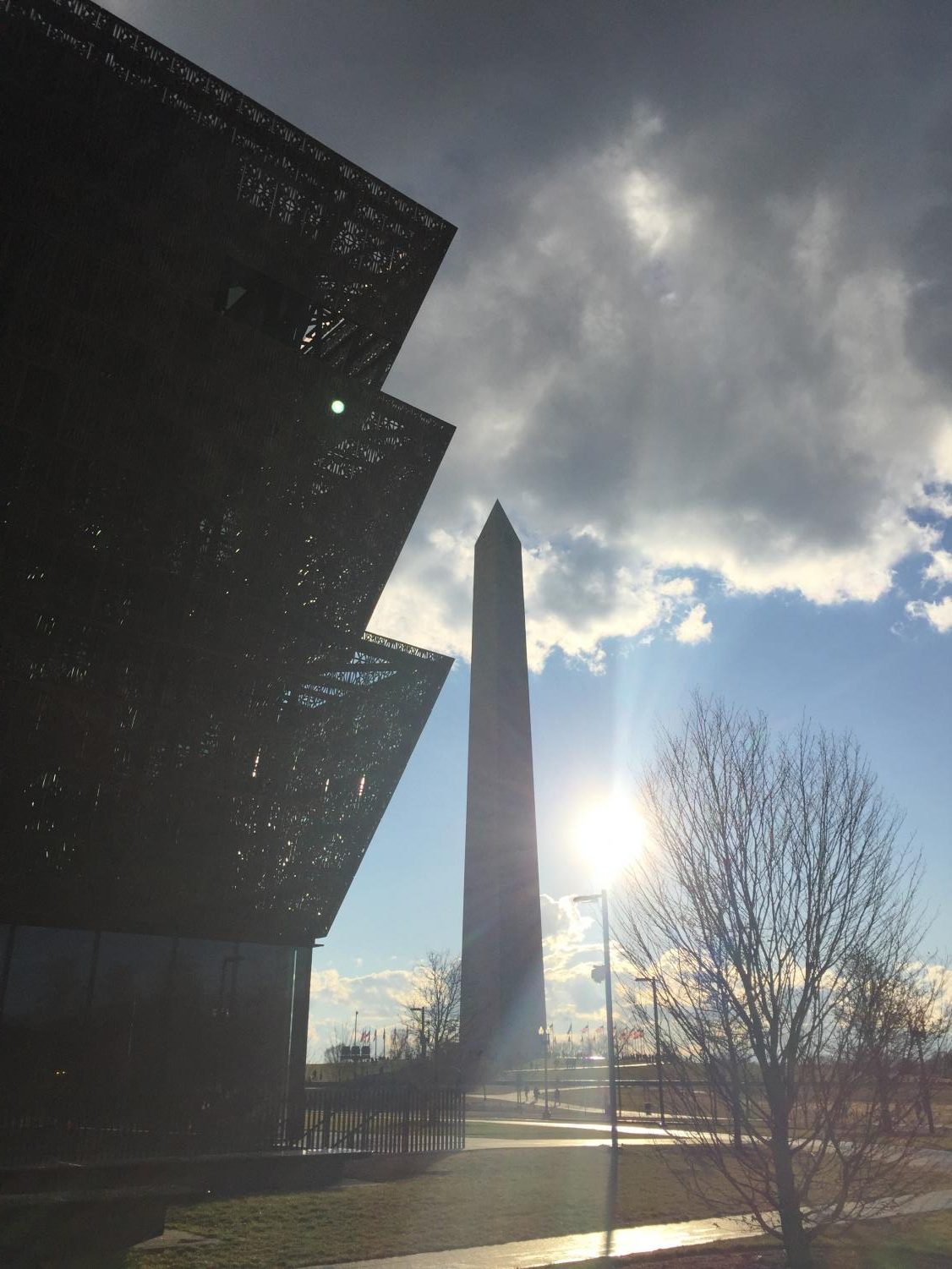The National Museum of African American History and Culture is a very humbling place. I had only ever seen the building from a distance, but being an architect’s daughter, I was anxious to get a closer look at the interior. From the outside, the building is hugely grand with skyward reaching fins, like the wings of a bird, spreading over the Washington D.C. Skyscape. I had been slightly intimidated by the museum before. It was imposing and dark during the day, and I knew the important histories contained inside would carry some serious emotional baggage. However, when I finally set foot within the museum, I realized the building’s purpose and prevalence on the National Mall were not to merely to make a statement; rather, the building itself asked you to reflect, to understand, and to explore what it had to offer.
You descend from the bright entrance hall into the history center, which starts in the fifteenth century. The walls are close, the passages are narrow and the ceiling is low, a huge contrast from the main hall. At first, this seems stifling and wrong, but as you start to read the information on the walls and study the images and artifacts in the passages, you realize that the very structure of the building is asking you to come to grips with history. Subtly, the structure and design ask you to read the truth about the horrors of slavery and to understand that American history was built on blood and tears in addition to dreams.
From there you ascend a ramp to each new chapter of African American History, and slowly the walls open around you as if to give you room to breathe. As you transition from one chapter to the next, the space seems to say, “it’s okay; take time to process whatever you are feeling.” At every turn there is a new wealth of information, something new to process, whether it deals with the successes of prominent abolitionists, or the atrocities of the Klu Klux Klan. Finally, when you ascend back to the brightness of the entrance hall, your head spinning with all that you experienced through a historical lens, you enter the Contemplative Court.
After the experience of the deep and dark of the historical center, the Contemplative Court feels fresh and open, as if the design is thanking you for listening to what it had to say. The hall is tall and planted with lush tropical greens, and as soon as you walk in you are met with an earthy, cool humidity that refreshes you after the time in the dark. Water descends from a ring in the ceiling surrounding you in a rain-like pattern and the words of African American leaders in justice and culture. This is the remarkable thing about the museum. Unlike any of the other Smithsonian museums, the very design of the building facilitates and builds on the information it contains and truly gives you the sense that you are understanding and learning from it, not just passing through. In this museum, you feel like you are a part of the history it tells.




































